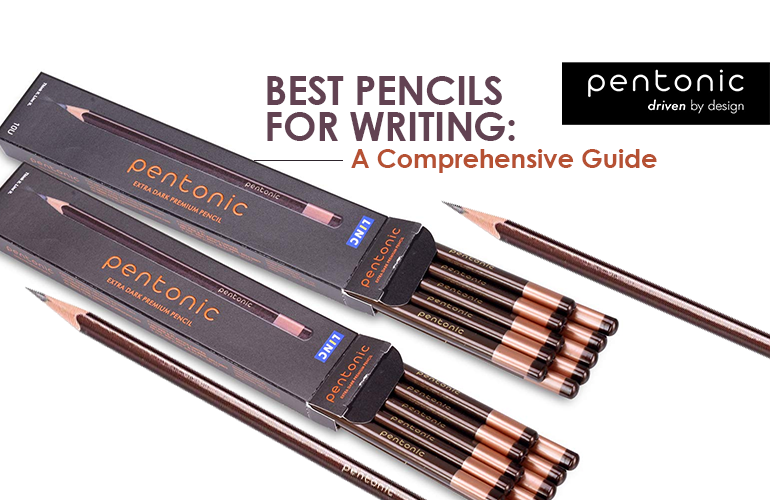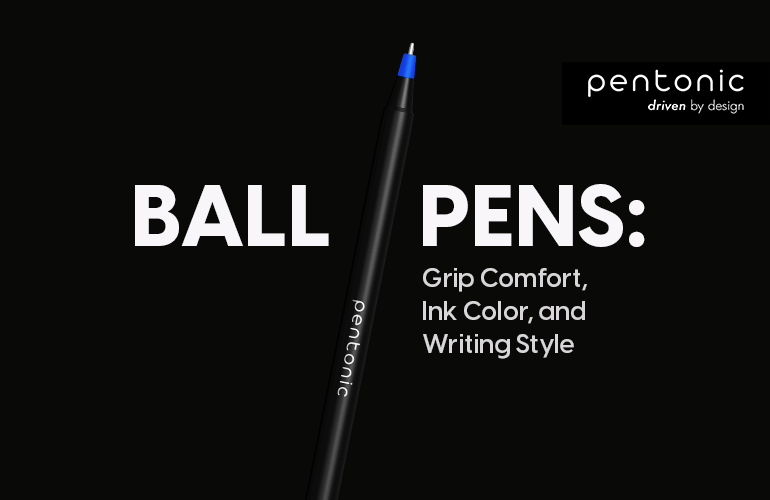Grips, Tips and Ink: The Top 3 Pillars of the Pen Explained

Pens are unique in themselves and yet all the same.
Confusing, isn’t it? But it’s true.
When you choose a new writing instrument, you’ll find that most pens share common features with others. While different pens serve different purposes, they will definitely have similar (if not identical) features that are inherent. Some of these are listed below:
- Barrel
- Cap
- Ink Reservoir
- Clip
- Twist Mechanism
- Spring
- Feed, etc.
These are important to consider when faced with a bewildering array of choices for a suitable pen. However, there are three that truly deserve your undivided attention, even more than the others. Based on the grip, the tip and the quality of the ink of a pen, you will easily find a good one with no compromise in standards.
Here are the most important pillars of a pen that you must know!
Don’t Grip it Tight Until You Get it Right
A grip can be termed as the covering on the body which your dominant hand grasps while writing. Why is this important you ask? Here are a few pointers to shed some light on its usefulness:
- Helps alleviate finger discomfort
- Useful for extended writing sessions
- Allows fingers to easily hold the pen
However, in terms of writing, the grip actually accounts for two things: the way you hold the pen and write as well as the quality of the grip that the pen inherently provides. The posture will result in easy movements from the wrist which will lead to the creation of better lines with ease. With more research, you’ll find that there are a variety of grips available like the Adaptive Tripod and Quadrupod Grip.
But it all boils down to what makes your fingers move comfortably.
Both these considerations share one common aim - to remove unnecessary strain and pain from the fingers/hand and while making writing as effortless as possible.
Can You Really Skip the Tip?
Also interchangeably called the nib, it is the metal point of a pen that actually makes physical contact with the paper. This is more significant than the others since writing does not happen without its presence. While it controls the precise flow and dispersion of ink, the size, shape and material of the tip will determine the style of words that are created.
In other words, different types of tips have an influence on how your sentences will look.
For uniform lines, a round tip will prove useful while italic tips are ideal for calligraphy since its tip is flatter in nature. Other forms like oblique, Arabic and Hebrew exist but these two are the most common types of tips that exist. In terms of materials, the common ones tend to be stainless steel while gold and others are also used.
So all in all, consider these four aspects of tips for getting the best pen:
- Shape
- Size
- Flexibility
- Material
Always Think in Terms of Ink
When it comes to the main highlight of the pen, all eyes will naturally fall on the type/appearance as well as the flow of the pen’s ink. This factor is particularly useful for a variety of reasons:
- Good ink flow equals lesser exerted force from the hand
- Creates legible and attractive results on paper
- Prevents hand discomfort and minimizes fatigue
- More to do with the actual experience of writing
Most prefer to equip themselves with a gel or rollerball pen since they are known to offer smoothness and complete ease while writing. After all, it’s the writing experience that really matters in the end. Not the appearance of the pen. Not the colour of the ink.
Of course, choosing a brand as prestigious as Linc Pen and Plastics Ltd. is a clear assurance of quality. Browse through the offerings and see for yourself just how effortless and comfortable writing can become. Make a choice that will bring happiness in the years to come.





Leave a Reply